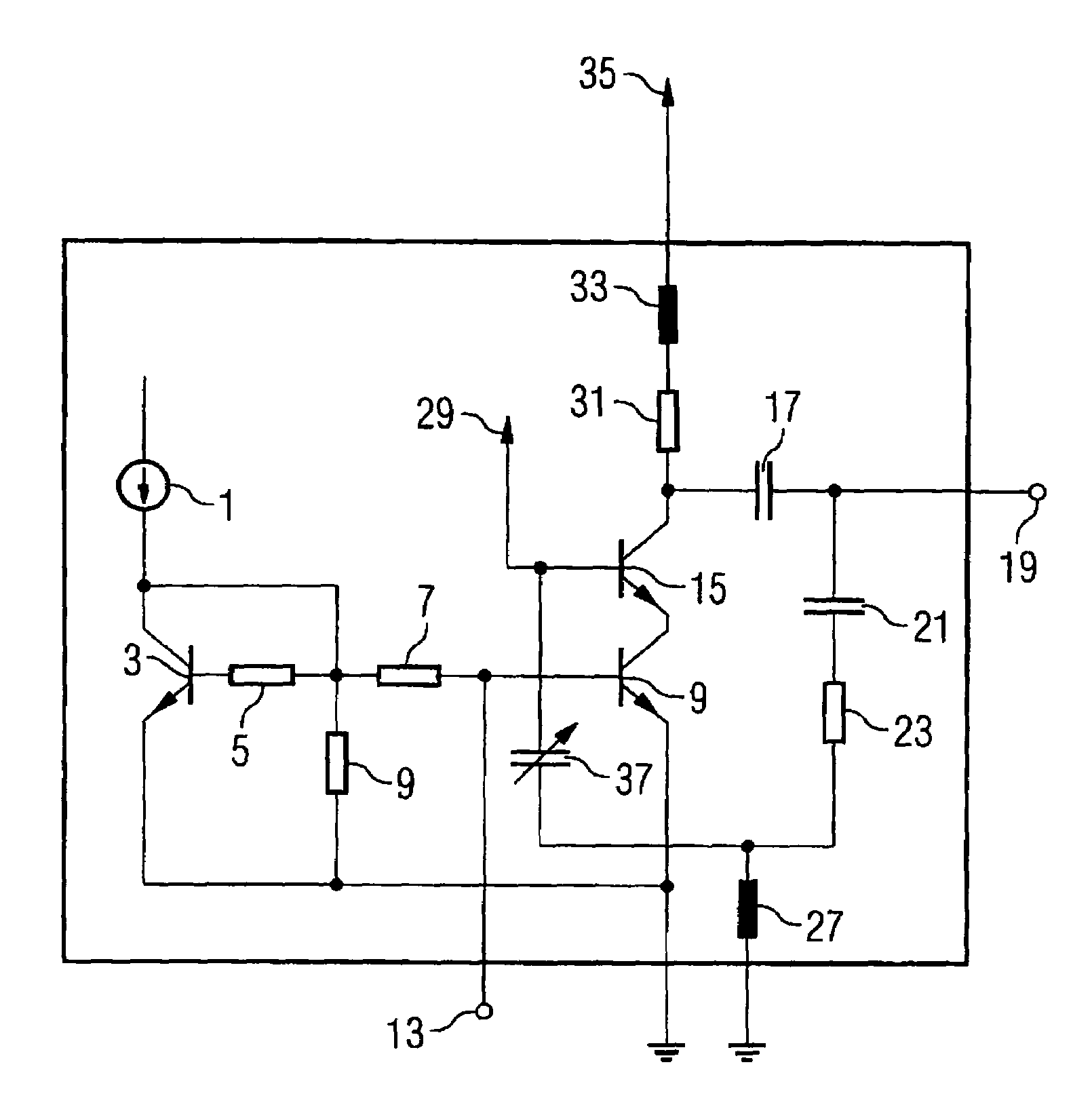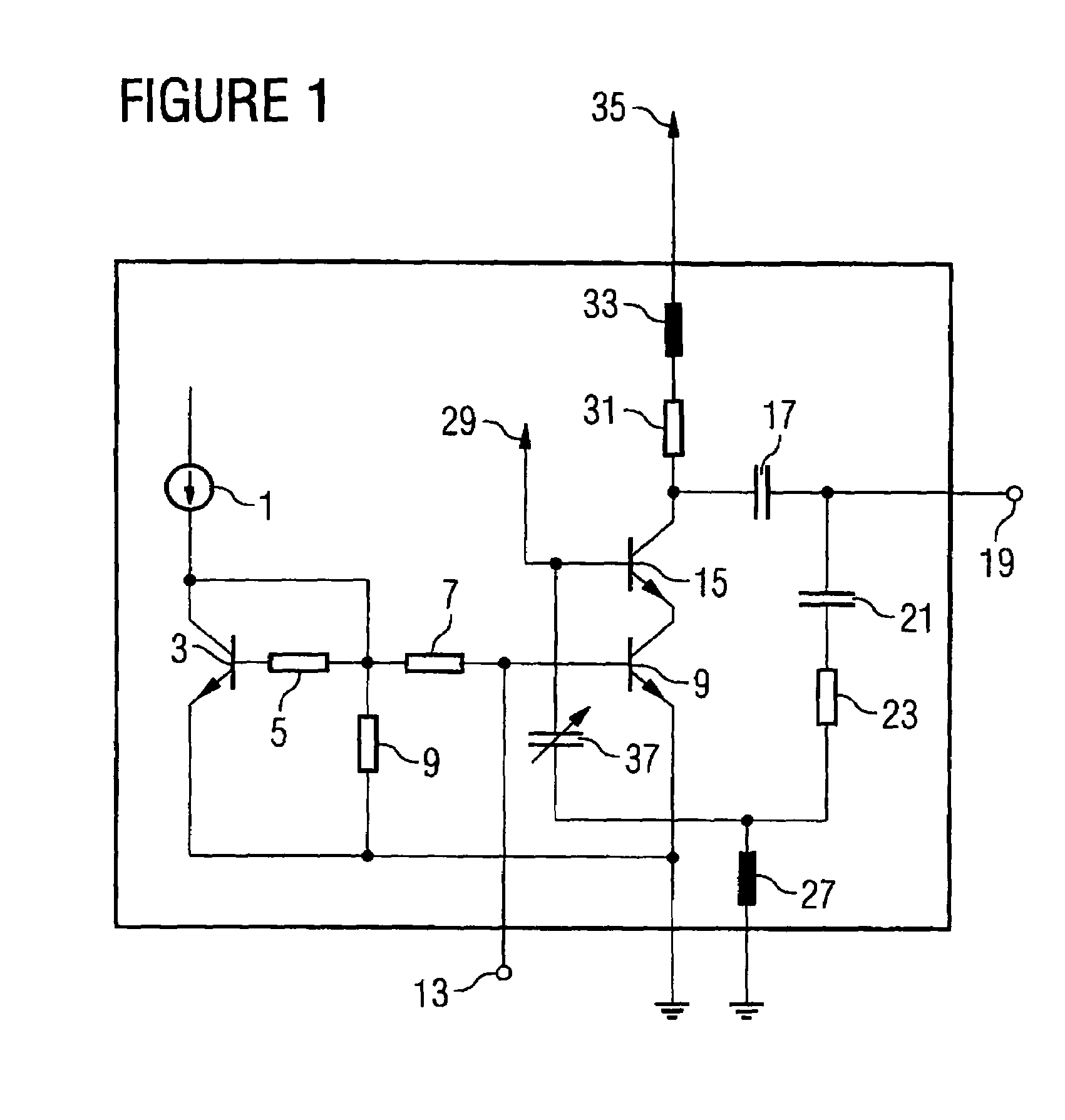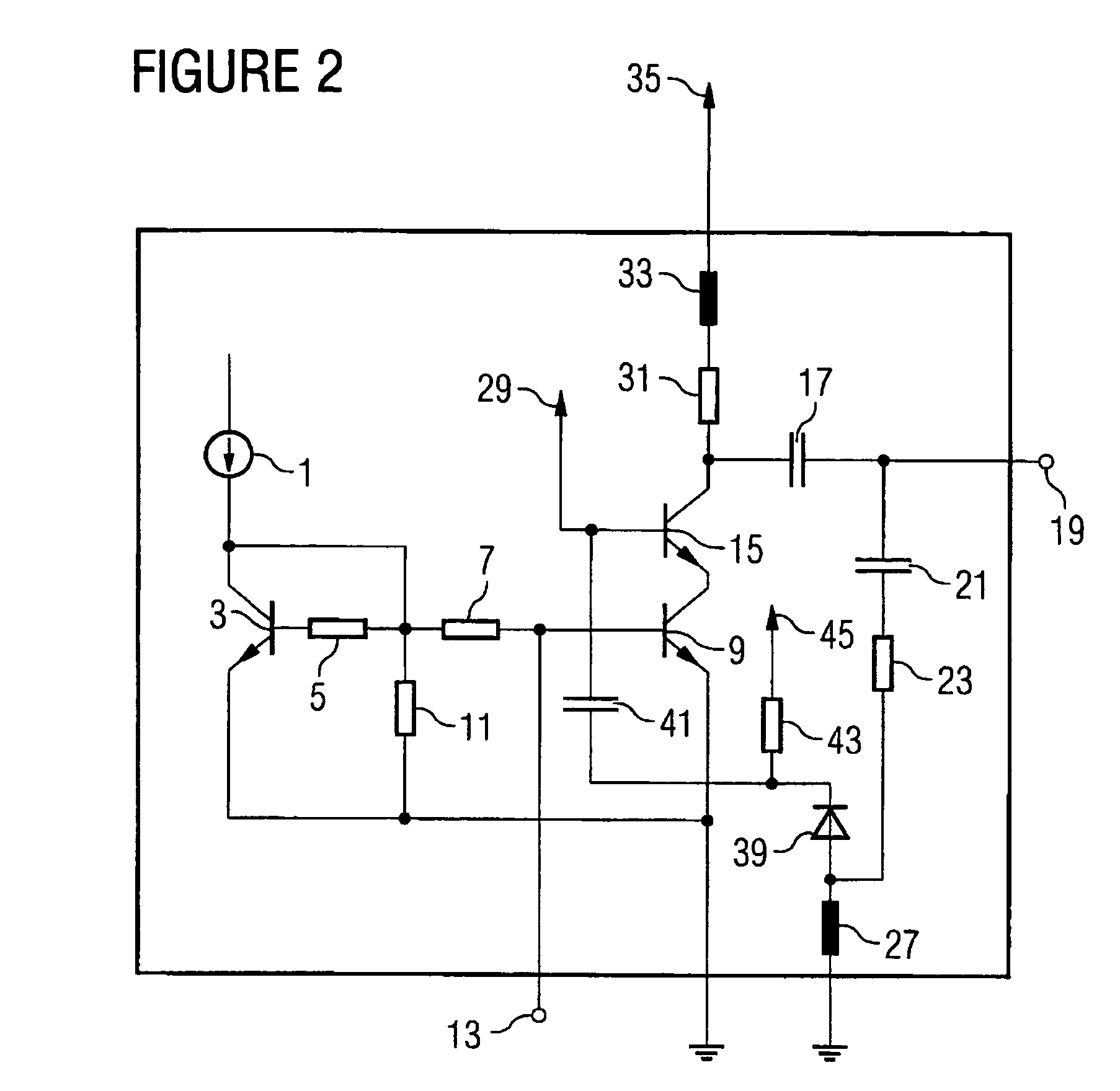Amplifier circuit with reduced temperature dependence of the gain
a technology of temperature dependence and amplifier circuit, which is applied in the direction of negative-feedback circuit arrangement, low-noise amplifier, amplifier combination, etc., can solve the problems of increasing the current consumption of the amplifier circuit, undesirable or too large variation in some applications, and the amplifier circuit's gain fluctuation, so as to reduce the current consumption of the circuit in which the inventive amplifier circuit is employed, the effect of reducing temperature dependen
- Summary
- Abstract
- Description
- Claims
- Application Information
AI Technical Summary
Benefits of technology
Problems solved by technology
Method used
Image
Examples
Embodiment Construction
[0034]In the subsequent description of the preferred embodiments, the same or similarly acting elements are provided with the same reference numerals. In particular, elements equal to or similarly acting as those from FIG. 4 are provided with the respective same reference numerals, and the following description is limited to illustrating the differences to the construction according to FIG. 4.
[0035]In contrast to the amplifier circuit shown in FIG. 4, in an amplifier circuit according to an embodiment of the present invention, which is shown in FIG. 1, the second feedback capacitor 25 is replaced by a capacitor 37 with temperature-dependent capacitance. The first feedback capacitor 21, the feedback resistor 23, and the capacitor 37 with temperature-dependent capacitance thus are connected in series between the output terminal 19 and the base of the output transistor 15.
[0036]For example, the capacitor with temperature-dependent capacitance 37 is designed so that its capacitance valu...
PUM
 Login to View More
Login to View More Abstract
Description
Claims
Application Information
 Login to View More
Login to View More - R&D
- Intellectual Property
- Life Sciences
- Materials
- Tech Scout
- Unparalleled Data Quality
- Higher Quality Content
- 60% Fewer Hallucinations
Browse by: Latest US Patents, China's latest patents, Technical Efficacy Thesaurus, Application Domain, Technology Topic, Popular Technical Reports.
© 2025 PatSnap. All rights reserved.Legal|Privacy policy|Modern Slavery Act Transparency Statement|Sitemap|About US| Contact US: help@patsnap.com



